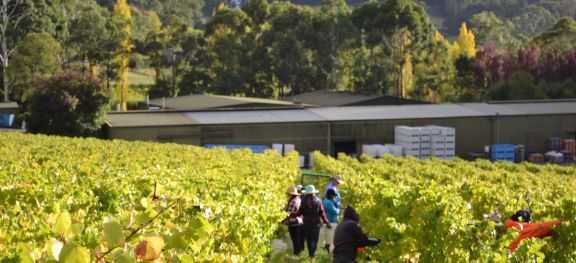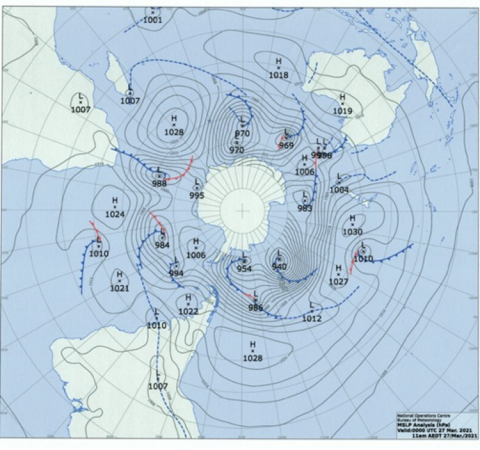South Australia 2021 – near perfect


Brian Croser reports on the 2021 vintage, which he describes as ‘perfection in a sea of uncertainty’.
In South Australia we have just completed one of the very best vintages of my 51-vintage career.
Against a background of global social tumult, roiling sickness and death in India and other developing nations, lockdowns anywhere and anytime, frost devastation in European vineyards and smoke and fires enveloping the vineyards of the west coast of America, to lay claim to one of the best vintages ever seems certain to excite accusations of having a ‘tin ear’ again.
But then again, the 2021 vintage in southern Australia follows two successive disappointingly small vintages. The fires and smoke of 2019–2020 are less than 18 months behind us and the floods of early 2021 on the eastern seaboard ruined the vintage for many there. Meanwhile in November 2020, the Chinese government declared war on the Australian wine community.
Nature and the human species are in vengeful mode. I can understand Nature being exasperated as each percentage-point increase of CO2 concentration inexorably increases the global temperature, and humankind seems incapable of altering habits.
In the midst of this global mayhem, perhaps unnoticed at the bottom of the globe, a very slightly warmer-than-average and very dry vintage evolved, ripening grapes in the last half of March into April, later than normal, in sunny, windless and cool days that constituted perfect autumnal conditions.
Two old mates conspired to create the near-perfect 2021 vintage conditions in southern Australia. SAM (Southern Annular Mode) and ENSO (El Niño Southern Oscillation) teamed up to create cooler-than-normal conditions along the southern coast of Australia, as SAM shifted the high-pressure cells that circle the globe in the Great Southern Ocean closer to Antarctica and further from Australia, and ENSO warmed the waters off the Australian east coast. Moving anticlockwise, high-pressure-cell winds from deep down in the Great Southern Ocean lapped the southern coastal regions of Australia all summer and the onshore moist winds from the warm Pacific Ocean brought torrential rain to the east coast.
I have interrogated my fading vintage memory bank to attempt to find an analogy to the 2021 vintage. More reliably, I have used the wonderful resource known as CliMate to map the temperature and rainfall records for the seven months of each vintage since 1980 in the regions where we at Tapanappa have vineyards.
Excluding vintages since 2010 as too young to make a judgement on their apogee of quality, the vintages that were excellent across all our regions are 1988, 1990, 1998, 2000, 2005, 2008 and 2009. The wines from these vintages, when opened over the years, reinforce the memory of the excellent vintage conditions.
I have used CliMate to assemble the GDD (growing degree days, ie the heat) and the rainfall of the seven-month growing season. These are crude measures of the vintage conditions because they do not take into account the distribution of heat and rainfall between months, between day and night nor the incidence of heatwaves.
Vintages like 2021
The closest fits of heat and rainfall to 2021 are 1988, 1990, 2005 and 2009. The GDD range demonstrates the wide variability in GDD between the vintages from 1980 to 2021, and the excellent vintages fit very closely to the average for each region, in both GDD and rainfall, perhaps being slightly warmer and drier than average.
|
Vintage |
Parawa |
Picadilly |
Wrattonbully |
|||
|
|
Rainfall (mm) |
GDD |
Rainfall (mm) |
GDD |
Rainfall (mm) |
GDD |
|
1988 |
250 |
1343 |
273 |
1363 |
234 |
1,493 |
|
1990 |
188 |
1373 |
216 |
1396 |
153 |
1502 |
|
2005 |
209 |
1399 |
296 |
1009 |
199 |
1446 |
|
2009 |
249 |
1379 |
275 |
997 |
230 |
1475 |
|
2021 |
265 |
1330 |
310 |
1237 |
202 |
1468 |
|
Average |
298 |
1338 |
350 |
1210 |
221 |
1480 |
|
Range |
|
978–1658 |
|
977–1548 |
|
1161–1872 |
The Tiers vineyard, being hand-picked last March in the picture above, has excelled in 2021. The Piccadilly Valley was slightly warmer and drier than average and the Chardonnay yield was less than average at 5 tonnes/ha (roughly 2 tons/acre), harvested on 25 and 26 March. Again the sugar level was modest and the acid high because of the cool growing season. 2021 Tiers Chardonnay is bubbling away the last grams of sugar in French oak barriques as I write and I expect it to be one of the best ever, with intense nectarine fruit and lovely balance. To return to vintage 2021, Foggy Hill Vineyard, at Parawa on the Fleurieu Peninsula, yielded a slightly higher-than-average crop of completely clean, moderately coloured Pinot Noir at a very modest sugar level and high acid. The Pinot was harvested between 17 and 20 March, a week later than normal. The wines have finished at 12.5% alcohol, reflecting the cool daytime growing conditions at Foggy Hill, and have velvety tannins.
Finally the Whalebone Vineyard in Wrattonbully, just north of Coonawarra, yielded perfect, intensely coloured fruit at between 4 and 5 tonnes/ha. The Merlot was harvested on 24 March and the Cabernet Sauvignon and Cabernet Franc on 10 April.
The Merlot has just been pressed to oak and the Cabernets are still on skins in the fermenters. They stain everything they touch and the aromas coming from the fermenters are mesmerising.
An apology
It seems inappropriate to celebrate the wonderful 2021 vintage in the south of Australia with so much misery and uncertainty elsewhere in the world. Balancing up, the Australian wine community has had its share of disappointments over the past few vintages, making us more acutely aware of the travails of others.
Nature delivers good and bad, dispensing vintage conditions without fear or favour and we make the most of what is delivered. It is impossible not to cherish a near-perfect vintage.
Below is my favourite view of the world, which is from the Bureau of Meteorology site. It is the isobaric map of the southern hemisphere from a point above the South Pole showing the intense low pressure systems circling the Antarctic and above that the band of high-pressure systems circling the Great Southern Ocean between Australia, South Africa, South America and the Antarctic continent. Those are the highs responsible for the wonderful 2021 vintage.
Become a member to view this article and thousands more!
- 15,408 featured articles
- 275,024 wine reviews
- Maps from The World Atlas of Wine, 8th edition (RRP £50)
- The Oxford Companion to Wine, 5th edition (RRP £50)
- Members’ forum
- 15,408 featured articles
- 275,024 wine reviews
- Maps from The World Atlas of Wine, 8th edition (RRP £50)
- The Oxford Companion to Wine, 5th edition (RRP £50)
- Members’ forum
- 48-hour preview of all scheduled articles
- Commercial use of our wine reviews
